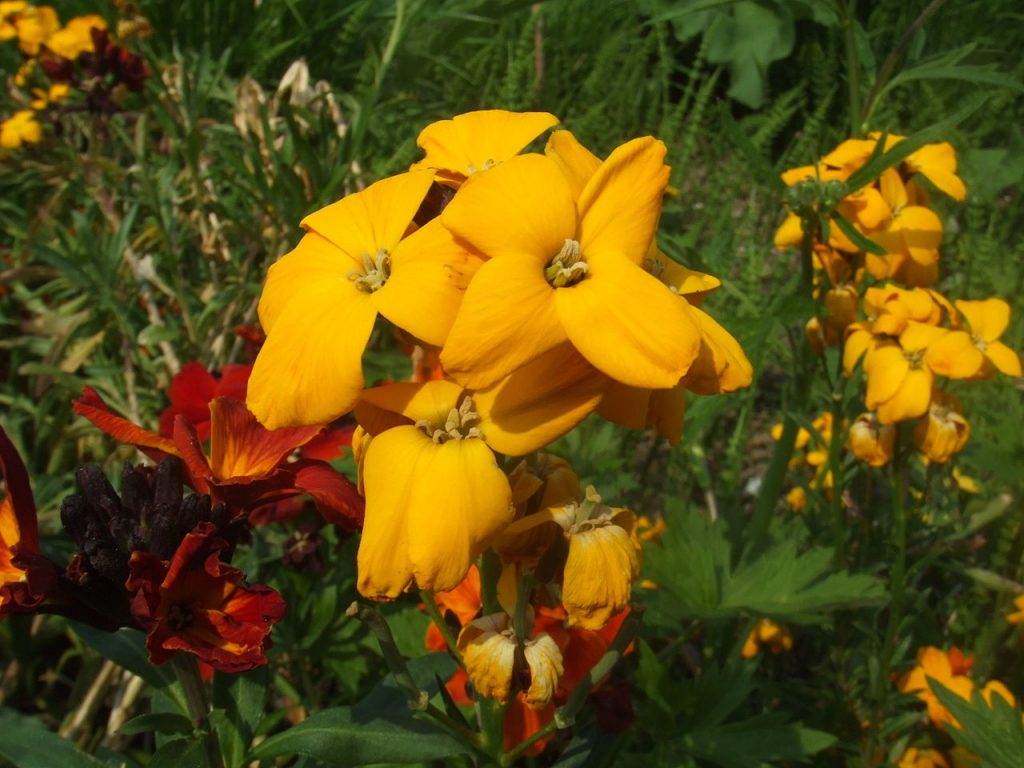
Native to Greece, this perennial subshrub is often grown as an annual or biennial It is a member of the mustard family, Brassicaceae, that also includes cabbage, alyssum, and common stock. The ancient Roman naturalist, Pliny the Elder (died 79AD), called it yellow violet and included as one of the three plants valued for use in making garlands. Wall paintings in ancient Pompeii show how garlands were made and used. Pliny also praised its medicinal value for treating a variety of health issues including regulation of menstrual flow, elimination of water and salt, problems of the the spleen, gout, inflammation of the eyes, abscesses, head sores, and chapped skin. Photo Credit Hans-B-Wikipedia
The plants grow 6-24″ tall and may be woody at the base with one to many highly branched stems growing from a rosette of long narrow pointed leaves that are 2-8″ long . In spring, club-shaped clusters of 10-30 flowers appear on leafy stems. The flowers are 3/4″ wide and have 4 petals that are bright yellow or yellow-orange to brown, sometimes with reddish purple or burgundy touches. The fruit is a thin, flattened, dehiscent seed pod 1-4″ long.
Size: 6-24″ H x 6-18″ W
Light: Full sun (some afternoon shade in the South)
Soil: Average, dry to medium moist, very well-drained, alkaline; tolerates lean soil, drought and maritime conditions
Hardiness: Zones 7-9